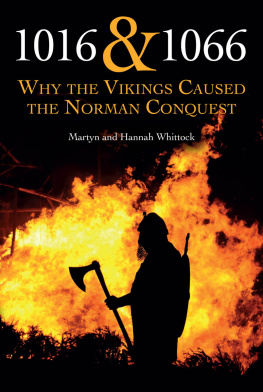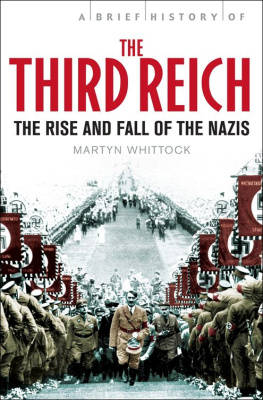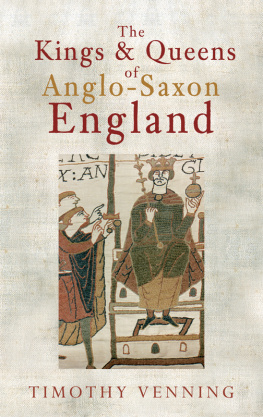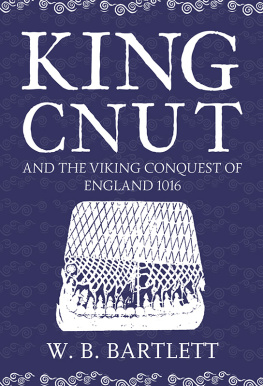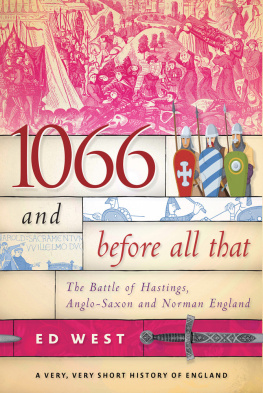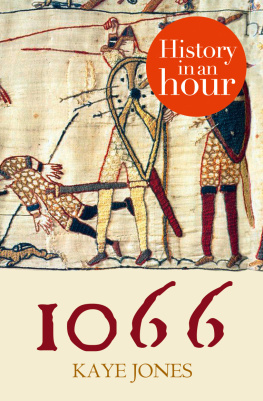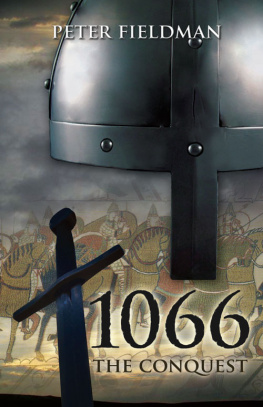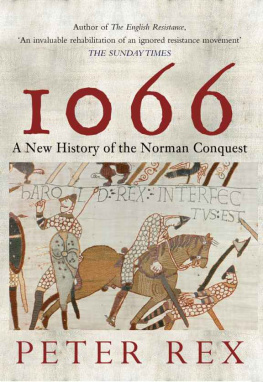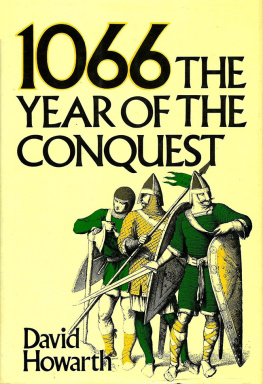1016 & 1066
W HY THE V IKINGS C AUSED
THE N ORMAN C ONQUEST
Dedication
To Ben Gunstone and Steve Dudley, as a reminder of all our history discussions, including those in the rain and mud!
1016 & 1066
W HY THE V IKINGS C AUSED
THE N ORMAN C ONQUEST
Martyn and Hannah Whittock

ROBERT HALE
First published in 2016 by Robert Hale,
an imprint of The Crowood Press Ltd,
Ramsbury, Marlborough, Wiltshire SN8 2HR
www.crowood.com
www.halebooks.com
This e-book first published in 2016
Martyn and Hannah Whittock 2016
All rights reserved. No part of this publication may be reproduced or transmitted in any form or by any means, electronic or mechanical, including photocopy, recording or any information storage and retrieval system, without permission in writing from the publishers.
British Library Cataloguing-in-Publication Data
A catalogue record for this book is available from the British Library.
ISBN 978 0 71982 050 2
The right of Martyn and Hannah Whittock to be identified as authors of this work has been asserted by them in accordance with the Copyright, Designs and Patents Act 1988.
Contents
Introduction
The Norman Conquest of 1066 is indelibly impressed on the history and the public awareness of England and, indeed, the whole of the United Kingdom because it was to eventually impact on the whole of the British Isles. Yet it was not the only Conquest in the eleventh century. Exactly fifty years earlier, in 1016, England had experienced a Viking Conquest. It is the contention of this book that it was this Viking Conquest in 1016 that, more than any other factor, led to the much more famous Norman Conquest of 1066. In short: the Vikings caused the Norman Conquest.
Since this book explores events of the eleventh century in England, Scandinavia and Normandy (with a brief excursion to Hungary), there are some issues that may benefit from a brief explanation at this point.
Language
The evidence from the eleventh century was written in the following languages: Old English, Latin, Norman-French and Old Norse. In the case of Old Norse, while it was spoken in various forms and dialects across the Viking world it has left fewer written examples from the period in question than the others; this is because literacy came much later to Scandinavia than to other areas of Western Europe. It does not always seem like this because a number of dramatic Old Norse written sources survive (most notably the sagas), which claim to shed light on this period. However, many of these sources date from a century or more after the events they describe and many were written in Iceland. Their evidence needs to be used with caution.
Whenever we quote from a source in these languages we always do so in a modern translation. The exception is when there is something noteworthy about a particular word or phrase that stands out as evidence. In that case we refer to it in the original language and translate it in order to explain it.
Old English and Old Norse used letters that are no longer used in Modern English. The most commonly used ones were: or lowercase (ash), or lowercase (eth) and or lowercase (thorn). The last two approximated to the th sound in modern English. The one we have employed when referring to personal names is / because it was so commonly used and does not have a direct parallel in modern English. For this reason we refer to thelred, not Ethelred. However, where a name has become more familiar in a modernized form, we have used the modern appearance; therefore, for example, we refer to Alfred not lfred.
Elsewhere, we have only rarely used these letters when a word or phrase quoted in the original language uses them. An example would be the Anglo-Scandinavian word li (seaborne military), which was used in the Anglo-Saxon Chronicle to describe both the forces of the Anglo-Saxon Harold Godwinsons sons and those of Svein Estrithson of Denmark after 1066. Another example is the Old English word theling (prince, throne-worthy royal); we refer to the thelings Edward and Alfred when discussing two Anglo-Saxon princes who were in exile in Normandy, and Edgar theling is the usual way that this prince is identified.
Anglo-Saxon English England
The people living in England before the Norman Conquest described themselves as English, living in England (albeit using the Old English versions of these terms). These were catch-all labels that summed up the amalgamation of regional groups and recently settled Scandinavians who, together, constituted one political community under one king of England. The term Anglo-Saxon had been coined over a century earlier but was not the usual term used at the time. However, we use it today in order to identify this particular period of history. As such, it remains a useful label and we deploy it alongside English, particularly when we need to differentiate between those who had been part of the population for several centuries, in contrast to Danes and Norwegians (and the occasional Swede) who had settled more recently.
Personal names
Many of the personal names of the time can be spelled in more than one way, for three main reasons. The first is that at the time there was inconsistency; for example, Harold is the same name as Harald. This is complicated by the fact that the same names existed in England and Scandinavia and could be spelled differently in the two areas. Svein, for example, is the same name as Swein and Swayne. The second reason is that eleventh-century names used the letters mentioned above and so can be spelled in various ways in Modern English. The third reason is that fashions change in how later writers represent these ancient names. So, Danish Knutr is more likely today to be spelled in an English form Cnut but was often written as Canute in the past. We have adopted a consistent pattern so that Cnut is used of both rulers with that name and Svein is used of the various men with that name. The exception is that we refer to Harold Godwinson (also known as Harold II) who became king of England in 1066 but Harald Hardrada of Norway who was killed by him in 1066. This is now quite a common convention and makes it easier to differentiate them. In the same way and for the same reason we refer to Harald Harefoot, the son of Cnut (also known as Harald I).
Two powerful and influential women were both called lfgifu. Emma of Normandy took this name after she married thelred II and before she later married Cnut; and Cnuts first wife was lfgifu of Northampton. To have two such significant women (both eventually married to Cnut) carrying the same name makes for confusion so we always call them Emma and lfgifu. We never refer to Emma as lfgifu.
Harold II Godwinson married two women named Edith but both played relatively minor roles in the events we describe; therefore we have not differentiated them other than by calling the first one Edith Swanneck, since this by-name was used by contemporaries.
We have also used other by-names, when they exist, as a way of differentiating people. As a consequence, we usually use the full names of Harold Godwinson and Harald Hardrada in order to differentiate them and we call Harold Godwinsons predecessor as king of England Edward the Confessor to avoid confusion with Edward the Exile. This does run the risk of making these by-names sound like surnames, which they were not, as some were only used by some people at the time and then only sometimes. And others were coined later. But this is a small price worth paying if it reduces confusion for modern readers.
Titles of medieval sources of evidence
Next page
